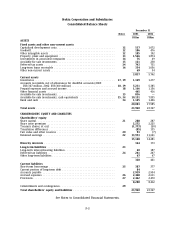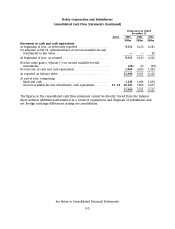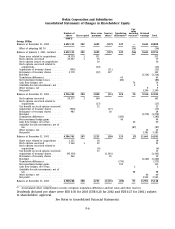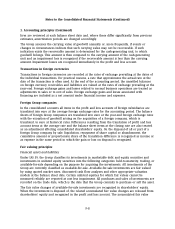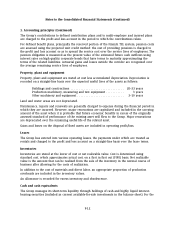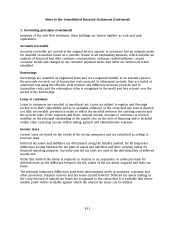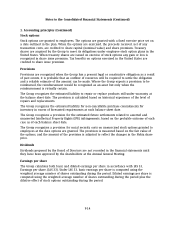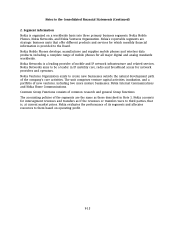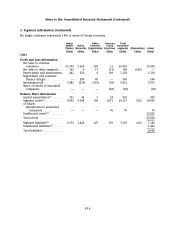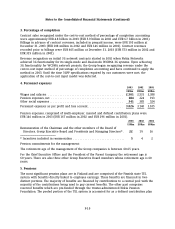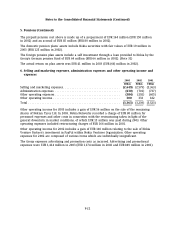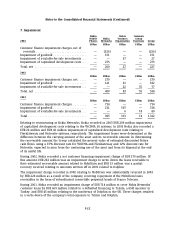Nokia 2003 Annual Report Download - page 122
Download and view the complete annual report
Please find page 122 of the 2003 Nokia annual report below. You can navigate through the pages in the report by either clicking on the pages listed below, or by using the keyword search tool below to find specific information within the annual report.Notes to the Consolidated Financial Statements (Continued)
1. Accounting principles (Continued)
purposes of the cash flow statement, these holdings are shown together as cash and cash
equivalents.
Accounts receivable
Accounts receivable are carried at the original invoice amount to customers less an estimate made
for doubtful receivables based on a periodic review of all outstanding amounts, which includes an
analysis of historical bad debt, customer concentrations, customer creditworthiness, current
economic trends and changes in our customer payment terms. Bad debts are written off when
identified.
Borrowings
Borrowings are classified as originated loans and are recognized initially at an amount equal to
the proceeds received, net of transaction costs incurred. In subsequent periods, they are stated at
amortized cost using the effective yield method; any difference between proceeds (net of
transaction costs) and the redemption value is recognized in the profit and loss account over the
period of the borrowings.
Loans to customers
Loans to customers are recorded at amortized cost. Loans are subject to regular and thorough
review as to their collectibility and as to available collateral; in the event that any loan is deemed
not fully recoverable, provision is made to reflect the shortfall between the carrying amount and
the present value of the expected cash flows. Interest income on loans to customers is accrued
monthly on the principal outstanding at the market rate on the date of financing and is included
within other operating income within selling, general and administrative expenses.
Income taxes
Current taxes are based on the results of the Group companies and are calculated according to
local tax rules.
Deferred tax assets and liabilities are determined, using the liability method, for all temporary
differences arising between the tax basis of assets and liabilities and their carrying values for
financial reporting purposes. Currently enacted tax rates are used in the determination of deferred
income tax.
Under this method the Group is required, in relation to an acquisition, to make provision for
deferred taxes on the difference between the fair values of the net assets acquired and their tax
bases.
The principal temporary differences arise from intercompany profit in inventory, warranty and
other provisions, untaxed reserves and tax losses carried forward. Deferred tax assets relating to
the carry forward of unused tax losses are recognized to the extent that it is probable that future
taxable profit will be available against which the unused tax losses can be utilized.
F-13


